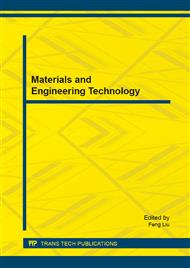[1]
National security technology center of CAAC, Manual for runway FOD protection, (2009).
Google Scholar
[2]
FAA Advisory, AC 150/5220-24, Airport foreign object debris detection equipment, (2009).
Google Scholar
[3]
FODFinder, http: /www. fodfinder. com/, (2013).
Google Scholar
[4]
FODetection, http: /fod-detection. com/, (2013).
Google Scholar
[5]
Tarsier Radar, http: /www. qinetiq. com/what/newtechnologies/ Pages/Tarsier. aspx, (2013).
Google Scholar
[6]
iFerret, http: /www. stratechsystems. com/iv_iferret. asp, (2013).
Google Scholar
[7]
Pavemetrics, www. pavemetrics. com, (2013).
Google Scholar
[8]
Mazouni K, Kohmura A. 77GHz FMCW Radar for FODs detection, . Proc. 7th European Radar Conf. Paris, France: EuMA, pp.451-454, (2010).
Google Scholar
[9]
Qi Zhong, Zhongjin Zhang, Danqing Yan, Erwen Jin, Xuelian Yu, Airport runway FOD detection based on LFMCW radar using interpolated FFT and CLEAN, International Conference on Computer and Information Technology, (2012).
DOI: 10.1109/cit.2012.160
Google Scholar
[10]
Erwen Jin, Danqing Yan, Zhongjin Zhang, Qi Zhong, Xuelian Yu, FOD detection on airport runway with clutter map CFAR plane technique, International Conference on Communication, Signal Processing and Systems, (2012).
DOI: 10.1007/978-1-4614-5803-6_34
Google Scholar
[11]
T. Lindeberg, Feature detection with automatic scale selection, International Journal of Computer Vision, 30 (2): p.77–116, (1998).
Google Scholar
[12]
T. Lindeberg, Scale invariant feature transform. Scholarpedia: 7(5): 10491, (2012).
DOI: 10.4249/scholarpedia.10491
Google Scholar
[13]
D. G. Lowe, Distinctive Image Features from Scale-Invariant Keypoints. International Journal of Computer Vision, 60 (2): p.91–110, (2004).
DOI: 10.1023/b:visi.0000029664.99615.94
Google Scholar
[14]
H. Bay, T. Tuytelaars and L. van Gool, SURF: Speeded Up Robust Features. Proceedings of the 9th European Conference on Computer Vision, Springer LNCS volume 3951, part 1. p.404–417, (2006).
DOI: 10.1007/11744023_32
Google Scholar
[15]
L. Fei-Fei and P. Perona. A Bayesian hierarchical model for learning natural scene categories. In Proc. CVPR, (2005).
DOI: 10.1109/cvpr.2005.16
Google Scholar
[16]
Herve Jegou, Matthijs Douze, Cordelia Schmid, Improving bag-of-features for large scale image search, International Journal of Computer Vision, V 87: 3, (2010).
DOI: 10.1007/s11263-009-0285-2
Google Scholar
[17]
J. A. Hartigan and M. A. Wong (1979) A K-Means Clustering Algorithm, Applied Statistics, Vol. 28, No. 1, pp.100-108, (1979).
DOI: 10.2307/2346830
Google Scholar


